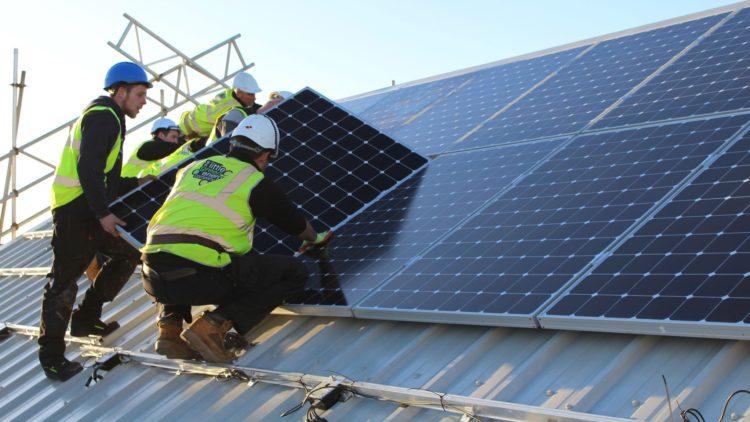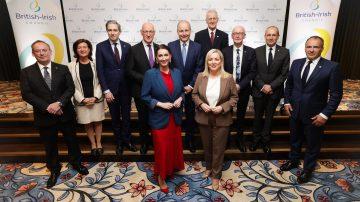The Committee for the Environment & Infrastructure has published the ‘Electricity Strategy for Guernsey’ to provide a strategic direction for the Island’s future electricity demand and supply between now and 2050, and to enable the development of the electricity market.
With Guernsey’s demand for electricity increasing, and the expectation that it will continue increasing, the Strategy outlines how Guernsey can manage and meet increased demand whilst balancing security of supply, affordability and Guernsey’s decarbonisation aspirations.
Having carefully considered six potential approaches to meet the predicted demand, the Committee is recommending that the States agree a strategic direction of increased local renewable energy through both solar and offshore wind arrays, and the installation of a second subsea cable to France with 100-Megawatt capacity. These new assets would complement the subsea cable via Jersey to France.
The pathway is not a fixed roadmap for exactly when technologies should be implemented but is instead a direction for the Island to follow. Whilst specific technologies are referenced, agreeing this strategic direction does not commit Guernsey to using them, or to a specific cable destination. Instead, the pathway recommends solutions that provide the most cost-effective and commercially viable solutions as understood today. There is flexibility to use alternative technologies should they become viable in line with existing States policies.
Once all proposed assets are fully operational, the offshore wind array would supply between 46% and 55% of Guernsey’s electricity needs, with the cables to France supplying between 37% and 43%, and solar supplying between 8% and 10%, reducing the amount of electricity that would need to be imported.
At this time, the States are being asked to agree the strategic direction to enable energy providers, potential investors and other entities to make informed business decisions. If agreed by the States, more detailed work, including the financial implications and funding options will be brought back to the States at a later date. It is hugely important that there is flexibility in the approach to financing the assets and the Committee is aware that any funding or backing would need to be considered in line with the wider States’ commitments.
There are options for funding much of the necessary capital investment without the requirement for States financial backing.
Deputy Lindsay de Sausmarez, President of the Committee for the Environment & Infrastructure, said: “Our demand for electricity is growing, but we need to meet that growing demand in an affordable, secure and sustainable way.
“Energy providers and potential investors are waiting for government to make a decision and provide a strategic direction. If we fail to make a decision, Guernsey Electricity will be obliged to spend tens of millions of pounds to keep the lights (and some may say more importantly, the WiFi) on by expanding the existing methods of supply. This is the most expensive option, and a scenario we are therefore very keen to avoid.
“We’ve worked closely with local energy representatives and subject matter experts, Siemens and PwC, to bring forward the recommended pathway. This is a more affordable option than continuing with how we currently generate electricity and will also provide us with a more secure supply, which over time will give us greater access to locally-generated renewable energy, and improved energy infrastructure.”
This Strategy has been developed through a technical consultation process with the Electricity Strategy Steering Group (a cross-committee group), the Energy Partnership (a consortium of local energy industry representatives), key stakeholders in the business community, and broad political input, with subject matter expertise provided by Siemens (on supply and demand) and PwC (on market structure).
Alan Bates, Guernsey Electricity’s CEO, said: “The Island’s Electricity Strategy is of critical importance, progressing this workstream is pivotal not only for the electricity sector but for the wider energy industry and Guernsey’s long term economic prosperity.
“The proposed pathway is significantly cheaper, in terms of total expenditure and electricity system price to Islanders, compared to carrying on as we are. It is also the least carbon intensive route, by some margin, compared to the other options presented.
“Throughout this process, our position has been clear; the Island needs to bring change with a greater sense of urgency so we can decarbonise electricity, prioritise security of supply, stimulate our economy through more on-Island renewable energy and deliver equity and fairness. The suggested pathway is good for Guernsey with a second interconnector and more locally sourced renewable energy.
“Overall, we are pleased to have been involved in the consultation, the pathway identified is promising and the clarity needed for making investment decisions is provided.
“We are hopeful the strategy will be agreed by the States and implemented without delay.”
Rupert Dorey, a representative of the Guernsey Chamber of Commerce, voiced his support for the electricity strategy, emphasizing its potential benefits: “Firstly we need a second cable – this is the key enabler for all of the other proposals in the policy. This decision cannot be delayed. Its urgent we get on with this to allow the island to continue the great job it’s done decarbonising our electricity, and it will also be instrumental in the enablement of constructing offshore wind generating assets and significant on island solar power.
“We also commend the decision to retain responsibility for retaining the electricity grid within Guernsey Electricity (and hence States control.) This not only ensures stability and avoids duplication of investment, but also makes GEL the conduit for all electricity from suppliers on a level playing field, including local generation. While it may not always be the lowest-cost option in the short term, this strategic choice encourages the development of local renewables and paves the way for the integration of serious offshore wind initiatives in the future.”
Rupert further elaborated: “The new electricity strategy leaves no room for a ‘do nothing’ option. Doing nothing is the most expensive alternative and involves higher levels of fossil fuel derived generation – which we all agree is simply not the answer. The recommended Option D offers the broadest appeal and checks the most boxes, while also being assessed as the second-cheapest option. It’s a thorough piece of work and we believe that it should be endorsed by the States
without delay.”













